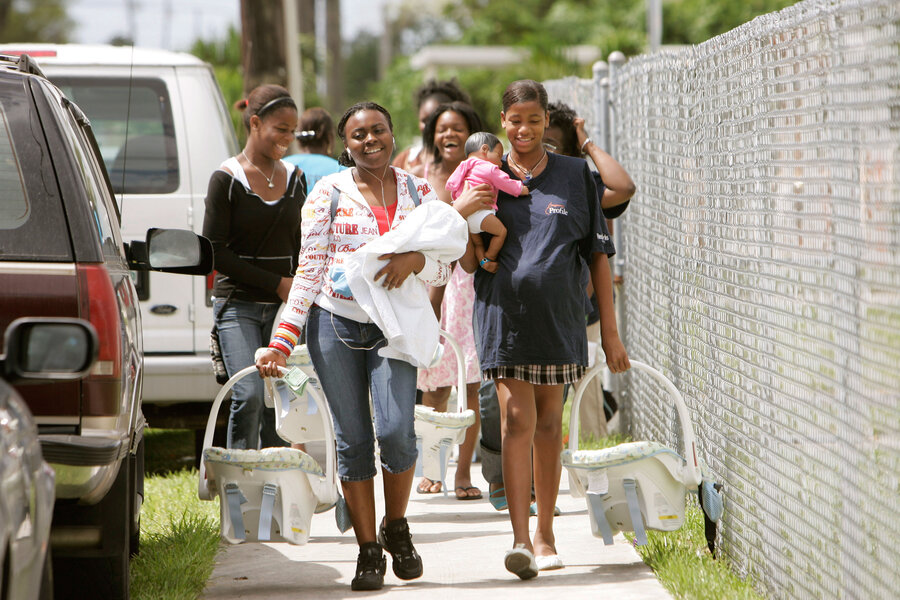Teen pregnancy prevention efforts appear to be working, CDC data show
Teen birth rates are continuing a downward decline, the Centers for Disease Control and Prevention said Thursday.
The drop is especially significant for black and Hispanic teens, where the rate has fallen by almost half since 2006. For black teens, the rate fell by 44 percent, and among Hispanics, it has fallen by about 51 percent since 2007. But among white teens, the birth rate is still only half as high, at 35 percent, even when taking those declines into account. In some states, the birth rate among Hispanic and black teens is still more than three times the rate for white teens.
"Despite [the] historic progress, profound disparities remain," Bill Albert, chief program officer for the National Campaign to Prevent Teen and Unplanned Pregnancy, told the Associated Press.
Teenage births have been on the decline since 1991, due to a variety of social and cultural influences. But the reduction has been sharpest from 2006 through 2014. In 2014 alone, teen birth rates fell nine percent from the previous year, across all racial and socioeconomic groups. About 77 percent of teenage pregnancies are completely unplanned, according to the US Department of Health and Services Office of Adolescent Health.
The CDC found that the decline was nearly universal across every state and every racial and ethnic group. But some states saw a bigger decline than others. In Arizona, Colorado, and Connecticut, the teen birth rate fell by nearly half; in North Dakota, it only fell by 13 percent. Teen pregnancy rates remain high in Arkansas, Mississippi, and New Mexico. In those states, more than 40 births occurred per every 1,000 girls ages 15-19.
“The United States has made remarkable progress in reducing both teen pregnancy and racial and ethnic differences, but the reality is, too many American teens are still having babies,” CDC Director Tom Frieden, said in a press release. “By better understanding the many factors that contribute to teen pregnancy we can better design, implement, evaluate, and improve prevention interventions and further reduce disparities.”
Teenage pregnancy in the US is still higher than its occurrence in other Westernized nations. In Ontario, Canada, the average pregnancy rate was 25.7 per every 1,000 teenagers in 2007. Research has shown that teenage pregnancy has both an economic and social cost. In 2010, teenage pregnancy and childbirth cost US taxpayers an additional $9.4 billion for health and social services to young mothers, the National Campaign estimates. The CDC continues to work on teenage pregnancy prevention at both the local and national level.
“We can ensure the success of teen pregnancy prevention efforts by capitalizing on the expertise of our state and local public health colleagues. Together, we can work to implement proven prevention programs that take into account unique, local needs,” Lisa Romero, a health scientist in CDC’s Division of Reproductive Health and lead author of the analysis, said in the news release.
This report contains material from the Associated Press.







